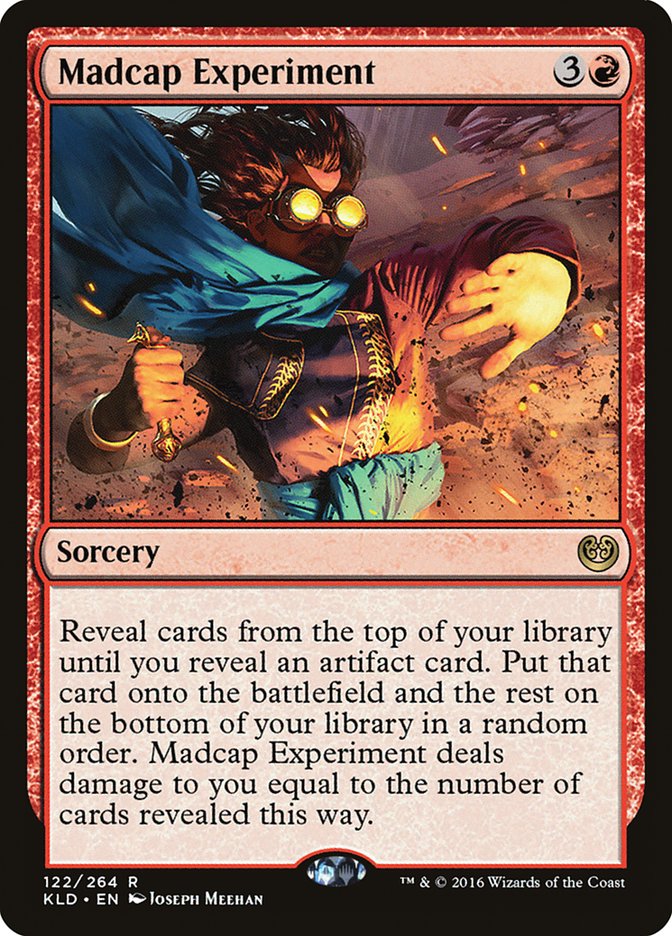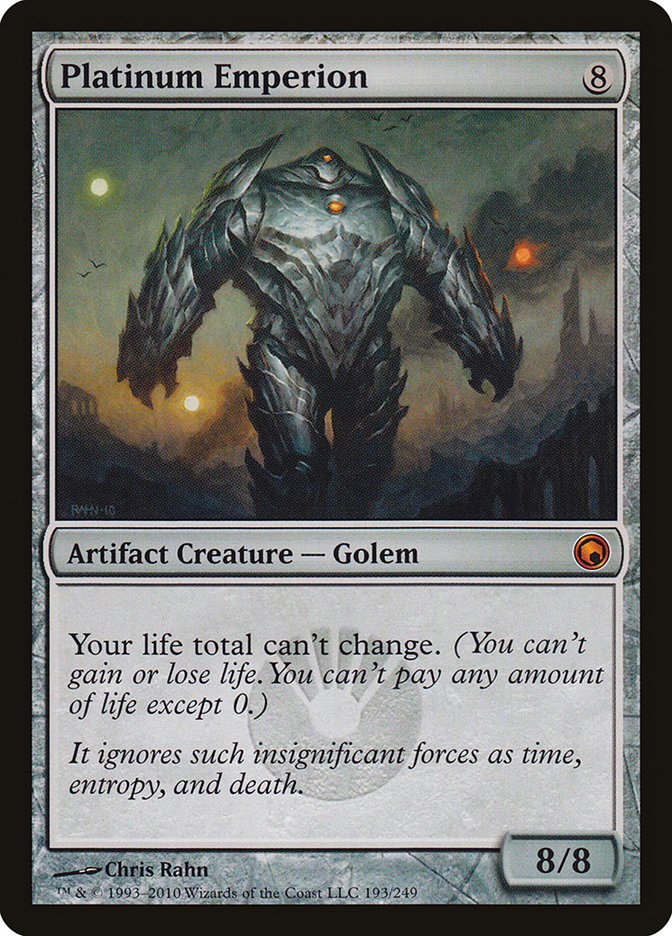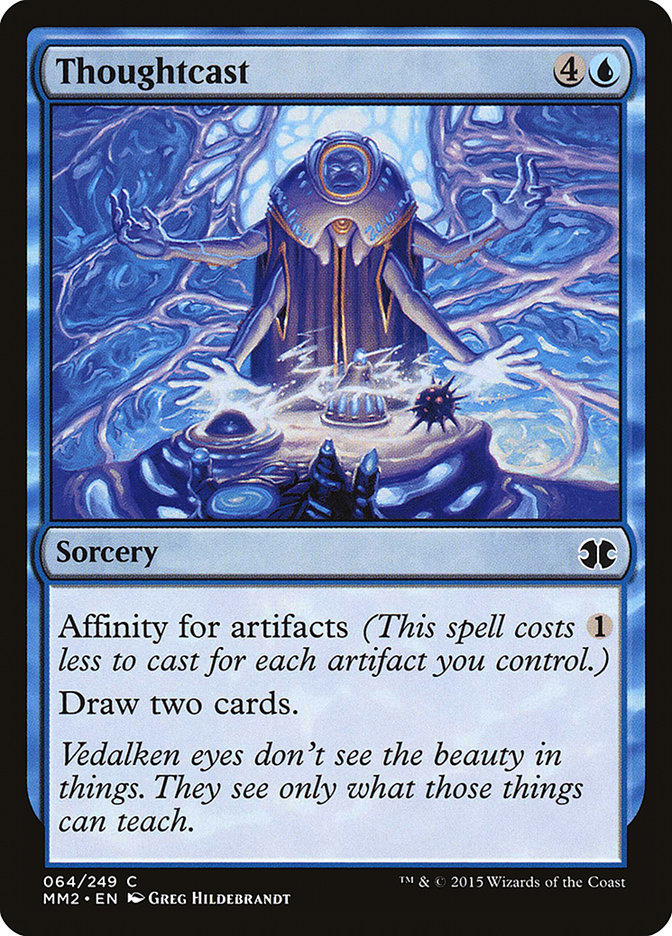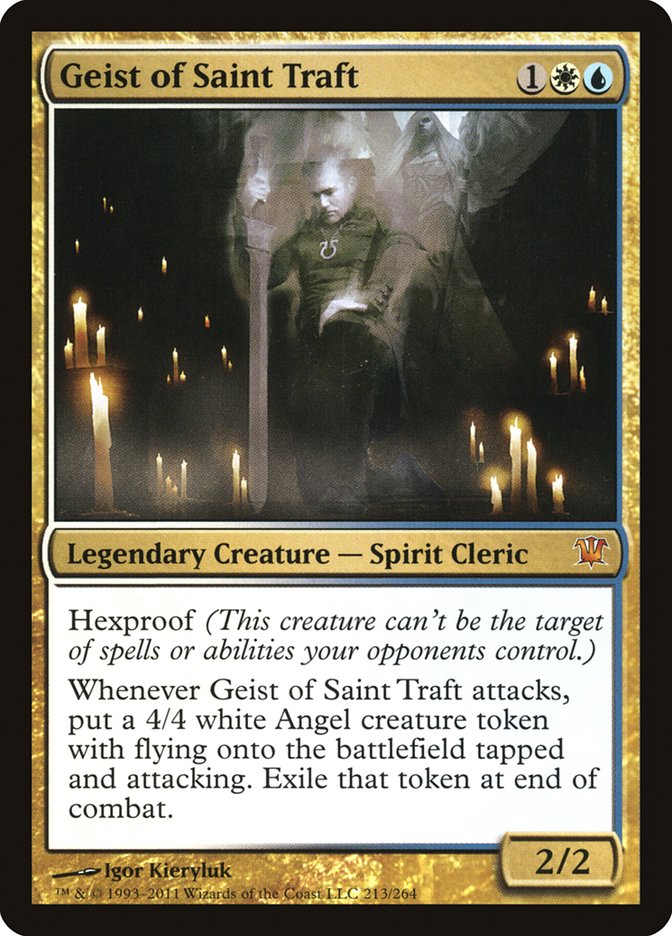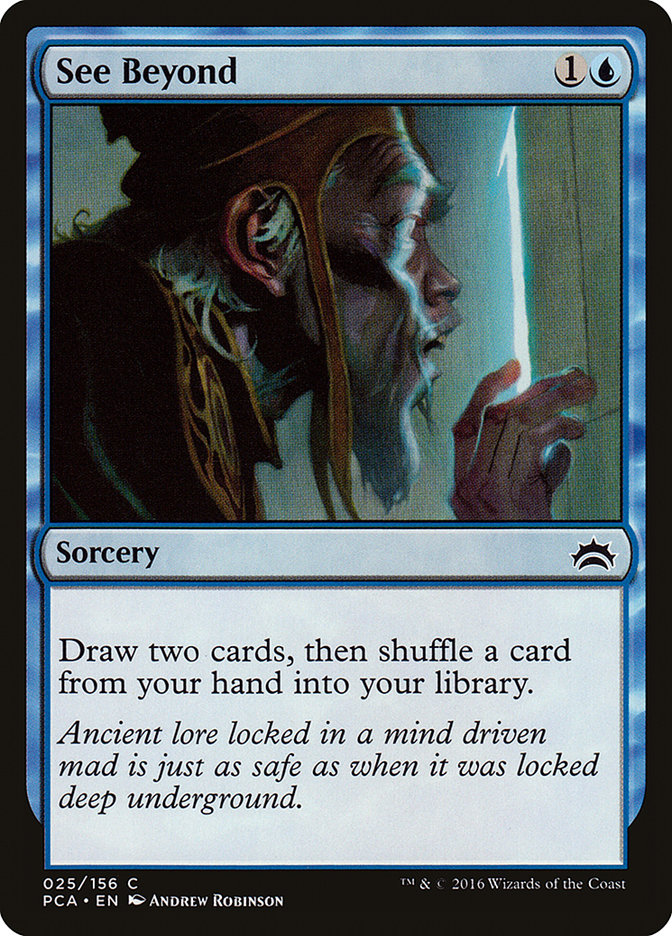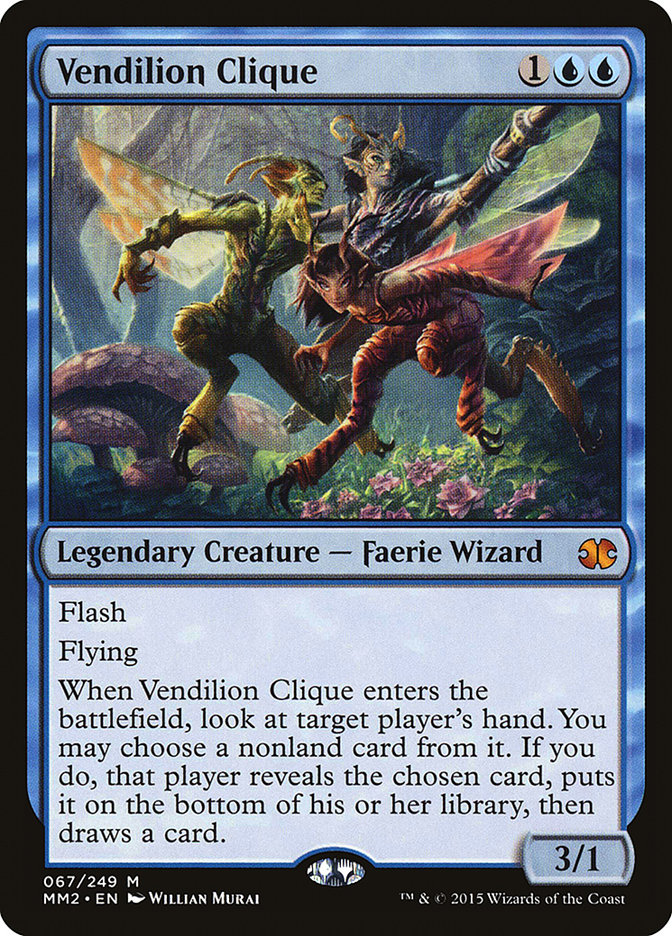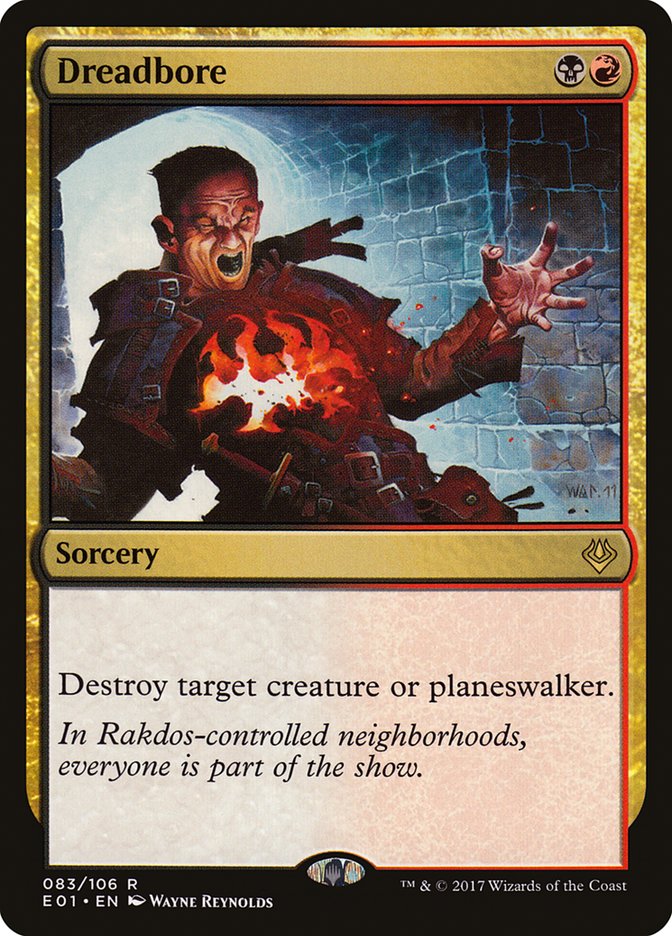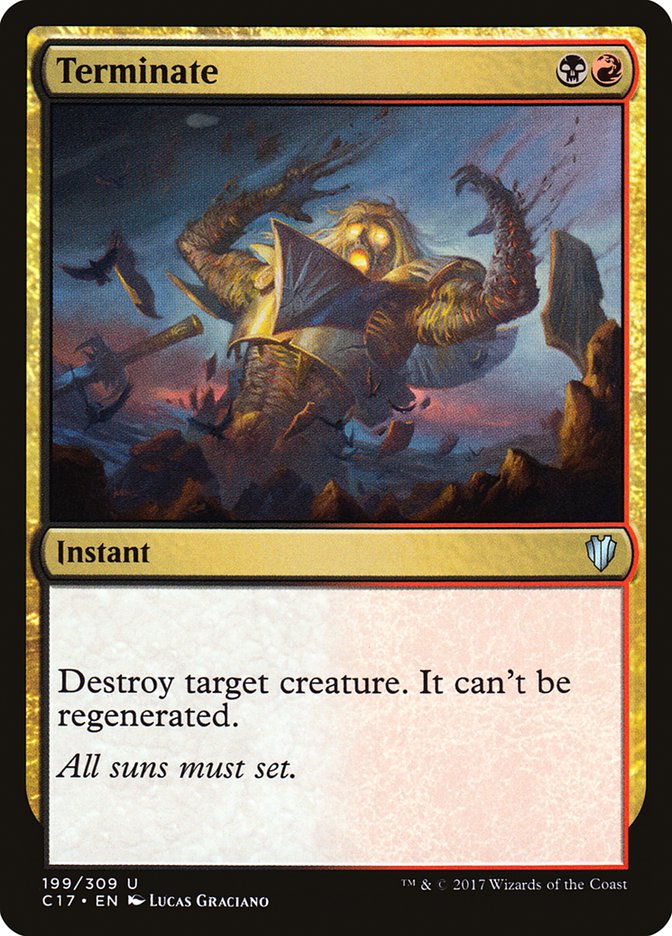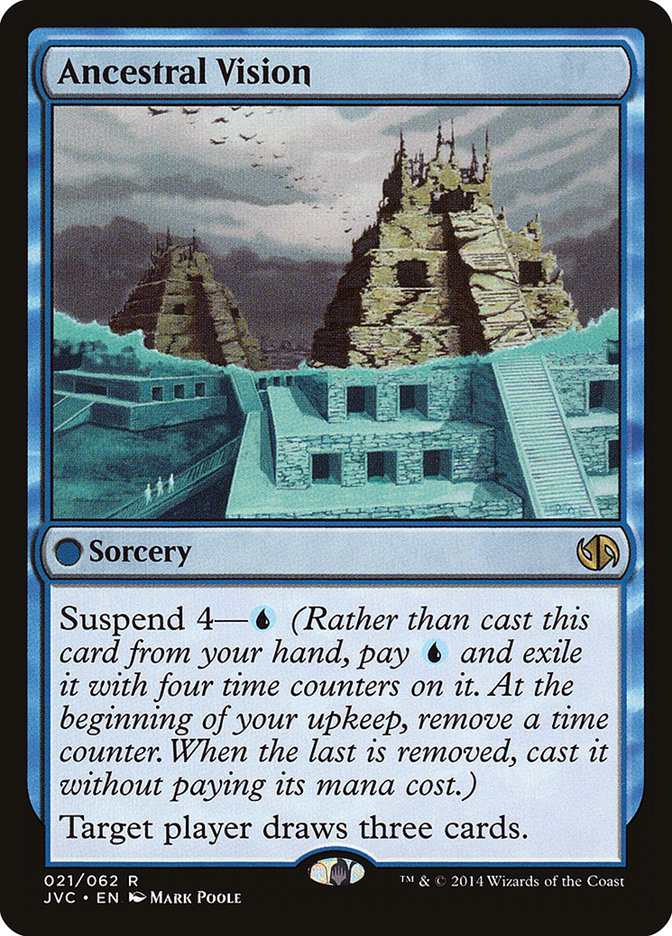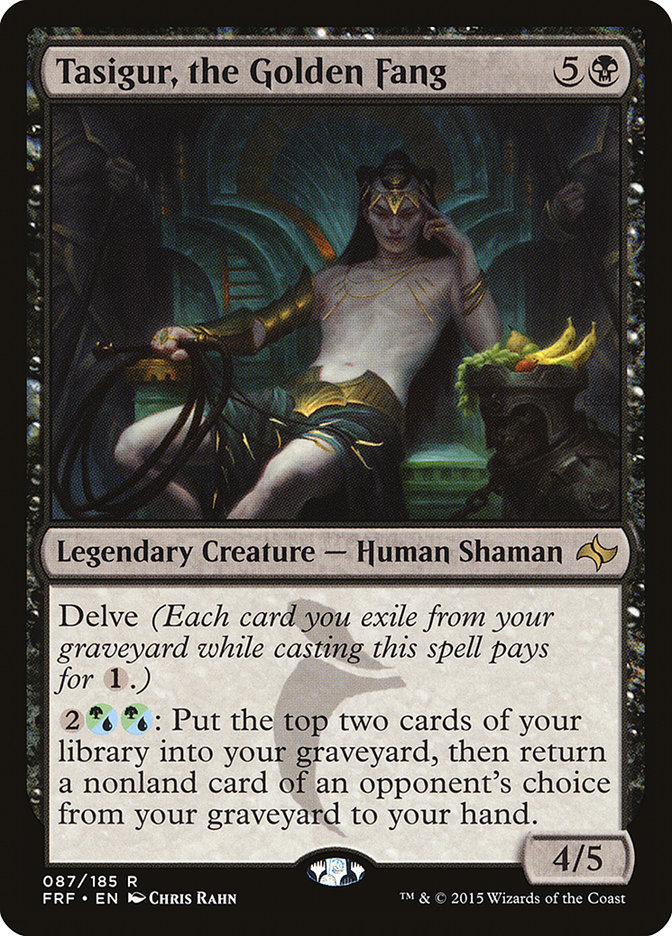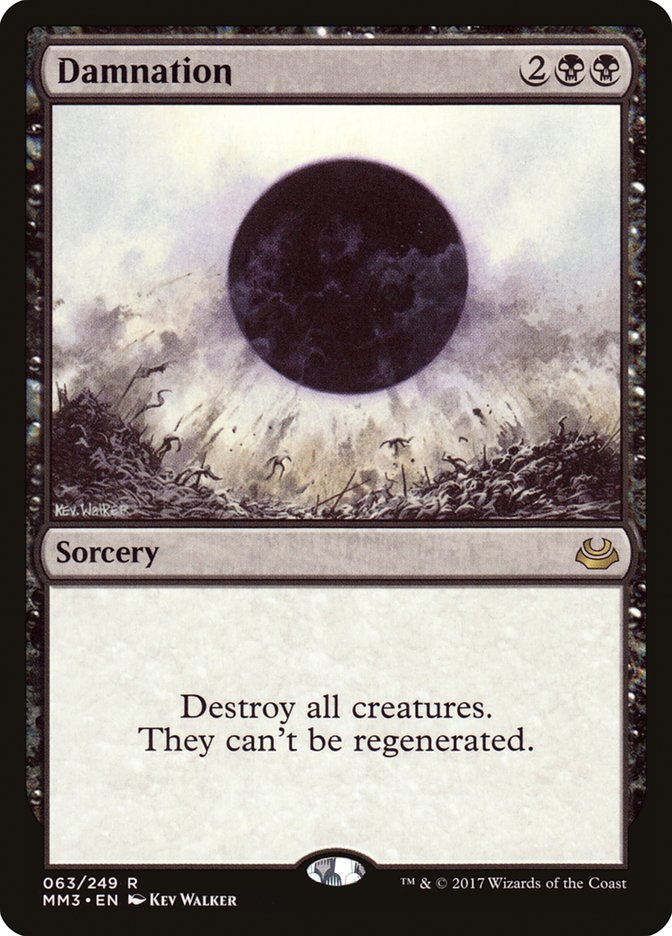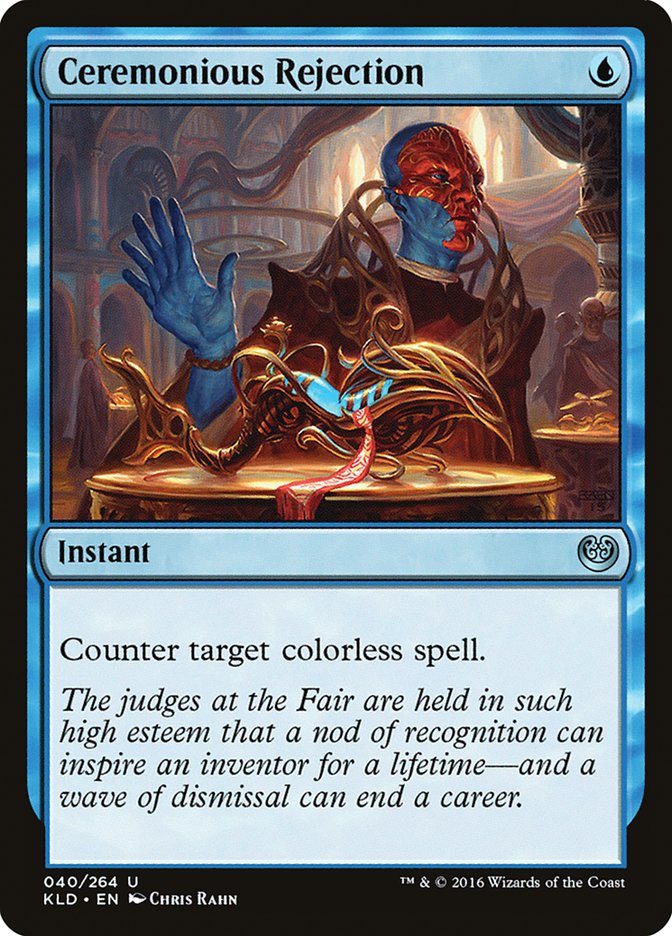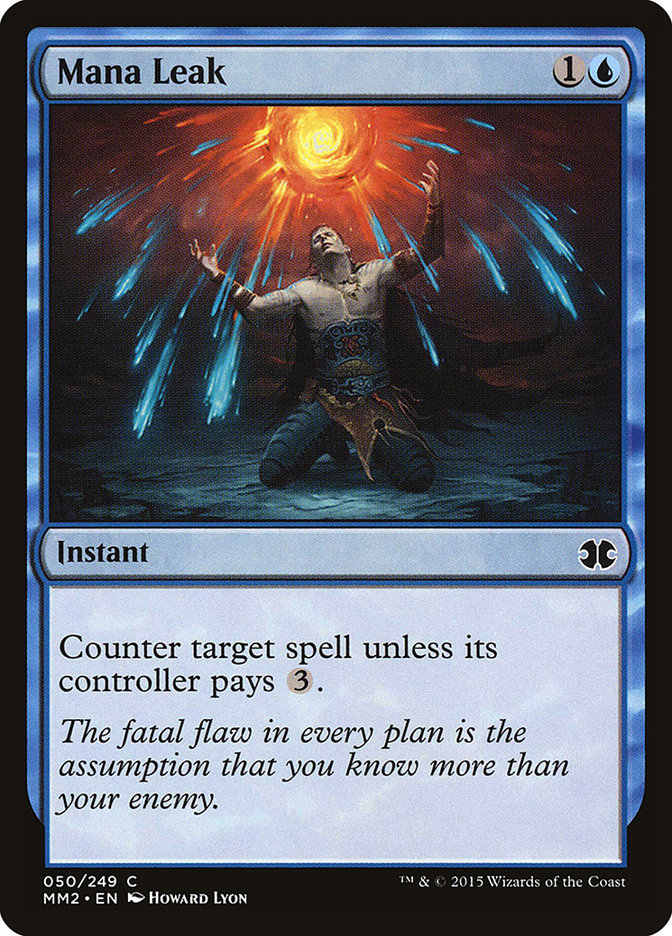I haven’t really been in love with Modern in a while.
Death’s Shadow had a place in my heart for a few months, but that love slowly faded. I can only flood out so many times after stripping my opponent’s hand before I hang up the towel. With that said, I still think there is a lot of room to explore new archetypes in Modern. After all, no one really knew what Lantern Control was until someone actually did well with it at a Grand Prix.
Over the last few months, the one card I wanted to incorporate into a control deck was Madcap Experiment. It seemed Splinter Twin-esque in that it could steal pre-sideboard games from matchups that weren’t beatable by conventional means. The real question was this: how many decks in Modern actually play maindeck answers to Platinum Emperion? Further, if that number was high, was Madcap Experiment even worth playing at that point?
I thought that if I could build a control shell around Madcap Experiment with the ability to sideboard it out in matchups with quality spot removal, then I’d be in good shape. After all, Modern is full of cheeky combo decks that might not be able to finish the job before you cast Madcap Experiment.
The other side of the coin was making sure I could still win once Platinum Emperion hit the battlefield. I needed removal. I needed interaction to slow down other combo decks. I needed another way to win the game if Platinum Emperion couldn’t get the job done.
So on Friday evening in Charlotte, I got to brewing. Mostly, I just wrote stuff down on my phone and tried to put the pieces together. I showed the list to a few people, made some changes, and eventually locked in this list for the Open.
Creatures (12)
Lands (22)
Spells (26)

Check out the deck tech I did with Nick Miller here.
It was the first draft of a deck I hadn’t been able to get on paper before. It looked smooth, and it looked relatively powerful. It had answers to most of the stuff people could throw at me. But was it good enough? At first, I wasn’t sure, but a quick 5-0 start had me thinking I might have actually found something awesome. When the wheels started to come off at the end of the day, I knew I’d missed a few things. I ended up squeaking into Day 2 at 6-3, but the list just felt like it was missing something.
My first loss came at the hands of Affinity, which I had beaten before. This version played Thoughtcast over Galvanic Blast, which made my removal plan a bit worse. I also awkwardly drew my second Platinum Emperion the turn before I was able to safely cast Madcap Experiment, which took away my ability to close the game. At that point, my opponent was able to bury me in Thoughtcasts and eventually moved all-in on an Arcbound Ravager teamed up with Inkmoth Nexus to finish the job. The second game started with me going to five cards, and the game was ended by a large Etched Champion.
My second loss was entirely due to Geist of Saint Traft.
My deck is not great at putting up blockers, and doesn’t have many ways to kill a creature with hexproof. So, already, we have found a major weakness: creatures that don’t die to conventional removal. That means I need to get a little friskier with something like Damnation, or just more copies of Kozilek’s Return. Even something like Flaying Tendrils would be better than Izzet Staticaster and Liliana, the Last Hope.
My third loss was to Andrew Jessup on Grixis Death’s Shadow, where I found that my cards just didn’t matchup up well. Not only was I losing to creatures with hexproof or other protection, I was losing to the cheap, large monsters from Death’s Shadow when backed by Stubborn Denial. This wasn’t something I was expecting to happen. I considered Death’s Shadow to be tough in the first game, since they have both Terminate and Kolaghan’s Command to stop Platinum Emperion, but I figured my post-sideboard plan to grind them out with Ancestral Vision was solid.
On the second day came more of the same. I lost once to G/W Hexproof, and another match to Mardu Midrange featuring a lot of two-for-one effects as well as planeswalkers. Over the course of the weekend, planeswalkers and creatures with natural protection felt very difficult to overcome, but I think that can be shored up with our support cards. All it takes is a little tweaking and we should be all right.
Creatures (13)
Lands (22)
Spells (25)

This is a new deck, and you might have some questions just looking at the first version of the deck, so let me go over some stuff to help you understand the choices I’ve made when building Grixis Madcap.
I feel like this was the biggest contention point when I posted the deck on Twitter. People went crazy over this inclusion, but to me it seems relatively easy to include. People suggested Chart a Course over this card, but I don’t think they realized how little I attack and how important it is to shuffle Platinum Emperion back into your deck. The first one won’t always end the game!
Second, See Beyond is just another card-filtering spell. It doesn’t give you raw card advantage, but it does allow you to gain virtual card advantage by shuffling away an extra land, dead removal or discard spell, or combo piece. I’m playing See Beyond for all these reasons, but also because I just love the card. I don’t know why. It almost feels like casting Brainstorm with an automatic shuffle effect.
Surprisingly, a lot of people were onboard with this card being in the deck. Not only does it provide you with another win condition, but you have more virtual copies of Snapcaster Mage if your opponent is unable to kill it. While I don’t know if the full four copies should be in the deck (three might be the right number), I do think it deserves a slot. It overperformed for me in the event, and I’m glad I remembered it was an actual Magic card while I was building the deck.
A minor win condition that can also filter away useless cards? Sign me up! I added a third to the new decklist to give me more instant-speed threats while also giving me one extra way to put drawn copies of Platinum Emperion back in my deck.
On average, I’d say that I target myself with Vendilion Clique two or three times more often than my opponent. In Modern, most decks are full of cards that do roughly the same stuff. The only times I target my opponent are when I know they’re about to cast something backbreaking or I want to make sure the coast is clear to cast Madcap Experiment on the following turn.
Drawing extra copies of Vendilion Clique isn’t all that bad either. The body is vulnerable but plays defense quite well. It’s just your Plan B in the first game, so don’t be afraid to trade it off if you’re under pressure or draw a second copy.
I’ve been going back and forth in my head on how to build the deck now. My gut tells me that Dreadbore helps answer some of the more problematic cards your opponent can play against you. I had multiple matches against decks featuring various planeswalkers, and they felt very tough to beat without some way to directly attack them. Dreadbore also doubles as a sorcery-speed Terminate, which actually isn’t that bad for this deck. We’re playing most of our cards at sorcery speed anyway. The split might actually be wrong, and Dreadbore might deserve the slot outright.
In some scenarios, instant-speed cards are a big deal. In some matchups, you need instant-speed answers to force fights on your opponent’s turn so that you can actually clear the battlefield of threats. If you’re ever forced to initiate a fight on your own turn, the results will rarely end in your favor. The split here between Dreadbore and Terminate is certainly a calculated one, but it will take a lot more games to figure out exactly the right numbers.
These two cards are at the heart of your alternate gameplan. If your opponent has the ability to kill your Platinum Emperion without trouble, you need a way to change your deck after sideboard. Ancestral Vision and Tasigur, the Golden Fang allow you to transition into a relatively solid Grixis Control deck. The trick is making sure you have all the right tools at your disposal to handle everything that can be thrown at you. Otherwise, you’ll be stuck with copies of Fatal Push in your hand while your Jeskai Control opponent beats you to death with a Geist of Saint Traft.
That’s one reason I failed. I was pivoting away from Madcap Experiment in most post-sideboard games but didn’t have the tools to overcome common threats. I was a little too focused on efficiency instead of versatility, which is a common mistake in Modern. In such a diverse format, having the right answers is often more important than having the cheapest ones.
I was a little blinded by Ancestral Vision, thinking I needed most of my cards to be pretty cheap so I could make up for basically skipping my first turn. That’s why I had Lightning Bolt in my deck. Unfortunately, Lightning Bolt doesn’t kill much of anything in Modern anymore.
If you want to know how to sideboard with the deck, the easiest cards to cut are Madcap Experiment, Platinum Emperion, and See Beyond. However, See Beyond does function well as a filtering spell and helps alleviate some pressure in the early turns when you keep a loose hand. While two mana is quite a lot in Modern, I think the effect is worth keeping around on occasion, even if you’re siding out the Madcap Experiment package.
As for the sideboard, I was still building it like a midrange deck as opposed to a control deck. Cards like Izzet Staticaster and Liliana, the Last Hope are great spells against decks that generate a bunch of small creatures, but a control deck needs a catch-all.
While it does cost more mana than Kozilek’s Return, having access to one Damnation usually means you have access to two. You have enough small-ball removal to slow the game down, which means you should be able to find Damnation at some point to seal the deal. And when you combine that with the two copies of Kozilek’s Return (for efficiency’s sake), you should have enough removal to take care of most annoyances.
Exclusions of Note
I’ve been back and forth on Liliana of the Veil, but I don’t know it’s necessary. Liliana of the Veil seems like a good idea at first, but the more I play with it the more I don’t like it in this strategy. We have too many cards that keep spells in our hand. In general, Liliana of the Veil doesn’t pair well with Snapcaster Mage, and I think that rings true here as well. While powerful, I don’t think it’s the right fit for this deck.
Ceremonious Rejection getting the axe could come back to bite me, but Disdainful Stroke does a lot of the same stuff, and we only have access to so many sideboard cards. If I ever decide to cut Ancestral Vision, which is a real possibility, then Ceremonious Rejection probably deserves a slot. It is very good against a chunk of the field, but I think we need to shore up some of our other problems (graveyard decks, hexproof creatures, planeswalkers).
I don’t want to flood my deck with discard spells. They become much worse as the game progresses, and I figured that Inquisition of Kozilek was better for this archetype. With that said, cards like Cryptic Command and various giant Eldrazi go up in value, but the two points of life are also very important. That’s why we’ve built our manabase featuring so many lands that don’t deal us damage.
Our deck is completely devoid of counterspells other than Disdainful Stroke out of the sideboard. While this might be our biggest hole, I think counterspells are particularly rancid at the moment, and they have been for quite some time. There’s nothing more I’d like to do than cast Remand in Modern, but it just isn’t a good card right now.
Mana Leak has a lot of the same problems, since you’re usually trading down on mana to counter a one-drop spell. While Mana Leak is certainly stronger in this deck than Remand, I think the biggest hurdle is making sure you’re doing things efficiently enough to keep up with the speed of the format. That’s why discard spells have been taking over and counterspells have been slowly declining in popularity. If I were to play a counterspell, it would likely be Logic Knot, but even Logic Knot is less than ideal in a deck that wants to tap out on the fourth turn.
Unlike Splinter Twin decks in the past, I’m not trying to cast Madcap Experiment and protect it. I’m just hoping that, in the right matchup, casting it on the fourth turn will be a knockout blow. If it isn’t, then I’m fine basically conceding the game on the spot.
Why Am I Playing Madcap Experiment?
That’s a tough question without a good answer.
I like casting the spells I like casting. Modern allows us a lot of breathing room when it comes to deck selection. You can do virtually anything you want, so long as you have either an insanely fast clock or enough interaction to slow the game down to your pace. I’m hoping that we’ve built the deck in such a way that we can do the latter.
Madcap Experiment is just a placeholder. I want to play Splinter Twin, but Madcap Experiment is the next best thing.
If you want to know why I’m not just playing Death’s Shadow, then I don’t really have an answer for you. I’m certainly fond of the deck, and I’ve done fairly well with it in the past, but I’m not in a place where I’m going to blindly play the “best deck” at all times. I’m going to experiment. I’m going to do the things I like to do, and try to have some fun along the way.
In the last few years, I’ve really felt like the fun aspect of Magic was slipping away. This past weekend helped revitalize a part of me that I feared might be lost. I found the little kid who’s playing his favorite cards at his friend’s kitchen table. I found my Rout into Desolation Angel combo. And while Madcap Experiment is the deck I played this week, it’s just the second on a long list of archetypes I want to try out in the near future. Last time it was Jund DeathVine. This time it was Madcap Experiment.
I don’t know if it’s good, and I honestly don’t care. I just want to have some fun, and I achieved that goal last weekend, even if I didn’t get to punch my ticket into another Top 8. For now, I’m just going to keep trying out new stuff, and hopefully one of those ideas will stick.
Should you play Madcap Experiment this weekend? Well, do you want to have some fun? If you like playing Grixis Cards: The Deck, then by all means. If you want to win the tournament, you should probably play Storm, Death’s Shadow, or Eldrazi Tron.
Just do what you love, and the rest will follow.


